The Loneliness of the Patriarch
NCP’s best Lok Sabha tally was nine seats two decades ago but that never came in the way of Sharad Pawar being projected as a prime ministerial candidate. That image of the wily strategist has been shattered by Ajit Pawar’s departure
/wp-content/uploads/2023/07/SharadPawar1.jpg)
Sharad Pawar (Photo: Alamy)
CRICKETER SADASHIV GANPATRAO ‘SADU’ SHINDE WAS A talented leg spinner who played seven Test matches between 1946 and 1952. He was born in August 1923 and died young while still in his thirties, in 1955. He was known for his googlies but would have been astounded at how, in 2023, his long-forgotten name was suddenly catapulted to the centre of politics in his home state of Maharashtra. About Sadu Shinde, cricket writer Abhishek Mukherjee writes: “Though brilliant, he could play only seven Tests, and was dropped for good.” Shinde had a good leg spin, but his strength lay in his two googlies. Apart from the conventional one, there was another—described beautifully by Sujit Mukherjee in Playing for India: “[C]oming after the orthodox wrist-crooked wrong-un, this delivery invariably sprang a nasty surprise. Ripped off the top of the third finger, it hastened unexpectedly off the pitch. Its tendency to pitch short nullified its efficacy as secret weapon but was practically unplayable when properly pitched”. Sadu Shinde’s daughter, Pratibha, went on to marry Sharadchandra Govindrao Pawar, four-time chief minister of Maharashtra and president of the Nationalist Congress Party (NCP). The NCP supremo had used cricket analogy to describe the short-lived arrangement under which Devendra Fadnavis became chief minister and Ajit Pawar deputy chief minister in 2019. That was how the dots connected.
Shinde’s googlies, and Pawar’s, popped up in the mainstream political debate when Maharashtra’s Deputy Chief Minister Devendra Fadnavis, in a recent interview to a private news channel about the events that followed the 2019 Assembly election, decried stalwart Sharad Pawar’s version as “half truths”. He went on to claim, “Everything will come out at the right time.” It sounded the warning bell for what was to happen on Sunday (July 2), two days later.
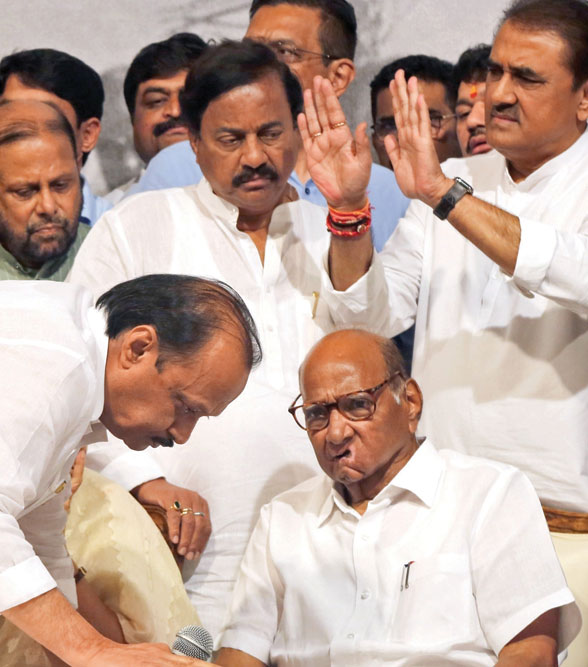
Fadnavis acknowledged that Pawar had indeed bowled a googly. “But his googly bowled out his own nephew Ajit Pawar,” he asserted. With the Shiv Sena walking out of its alliance with the Bharatiya Janata Party (BJP) after the election and Uddhav Thackeray trying to cobble together an alliance with others, Fadnavis and NCP’s Ajit Pawar had taken oath as chief minister and deputy chief minister, respectively, on November 23, 2019.Their alliance lasted merely 80 hours, as Sharad Pawar did not give his final approval for the arrangement.
Fadnavis disclosed in that same interview that Sharad Pawar had, in fact, met him to discuss the blueprint of a possible BJP-NCP coalition government after the 2019 Assembly polls. In end-June, Pawar himself acknowledged that “Fadnavis has rightly said they met me and various issues were discussed. He said in his interview yesterday that I changed my stand within two days after that meeting. The question is, why did Fadnavis take his oath after two days and that too, early in the morning, keeping everyone in the dark?”
Taken in by the celebrations in the opposition camp as its ‘Chanakya’, a master strategist who could tighten the nuts and bolts of a formidable anti-Modi alliance, Sharad Pawar took the ‘googly’ bit from Fadnavis as a personal compliment. “I don’t know if it was a political game or not but let me tell you that my father-in-law Sadu Shinde was a very good googly bowler. At the same time, I have served as president of the International Cricket Council. So, I know how to bowl a googly (to stump Fadnavis) even if I have not played cricket myself,” he said. A googly is a ball that turns in one direction while it is expected to turn in the other. Pawar, no doubt, was basking in self-flattery and praise related to his father-in-law with whom he compared his own skills on the political field.
However, Sharad Pawar’s seemingly clever retort was about 2019. What the NCP supremo seemed to have forgotten is that this time round, the defining political googly was delivered by his own nephew, Ajit Pawar. In one fell stroke, Ajit managed to bust the myth of uncle Sharad as a political wizard, a strategist par excellence in Maharashtra politics, even weaning away the best men on his team, including staunch loyalists like Dilip Walse Patil and Chhagan Bhujbal. This is the third time Ajit Pawar has taken oath as deputy chief minister of his home state since November 2019, twice as part of the National Democratic Alliance (NDA) and once with the Maha Vikas Aghadi (MVA). He also served as deputy chief minister twice before 2019.
Sharad Pawar took away senior Congress leaders Govindrao Adik and Sushilkumar Shinde in his 1978 rebellion, torpedoing the Vasantdada Patil government 45 years ago. At the time Pawar had walked out of the Congress government with 40 MLAs. Ajit Pawar has proved a quick and efficient learner, checkmating his mentor and uncle in the game. It turns out that the “instant coffee” (as Pawar’s daughter Supriya Sule described the events) was a caffeine high for the BJP combine in power in Mumbai and a hard blow against the already floundering opposition.
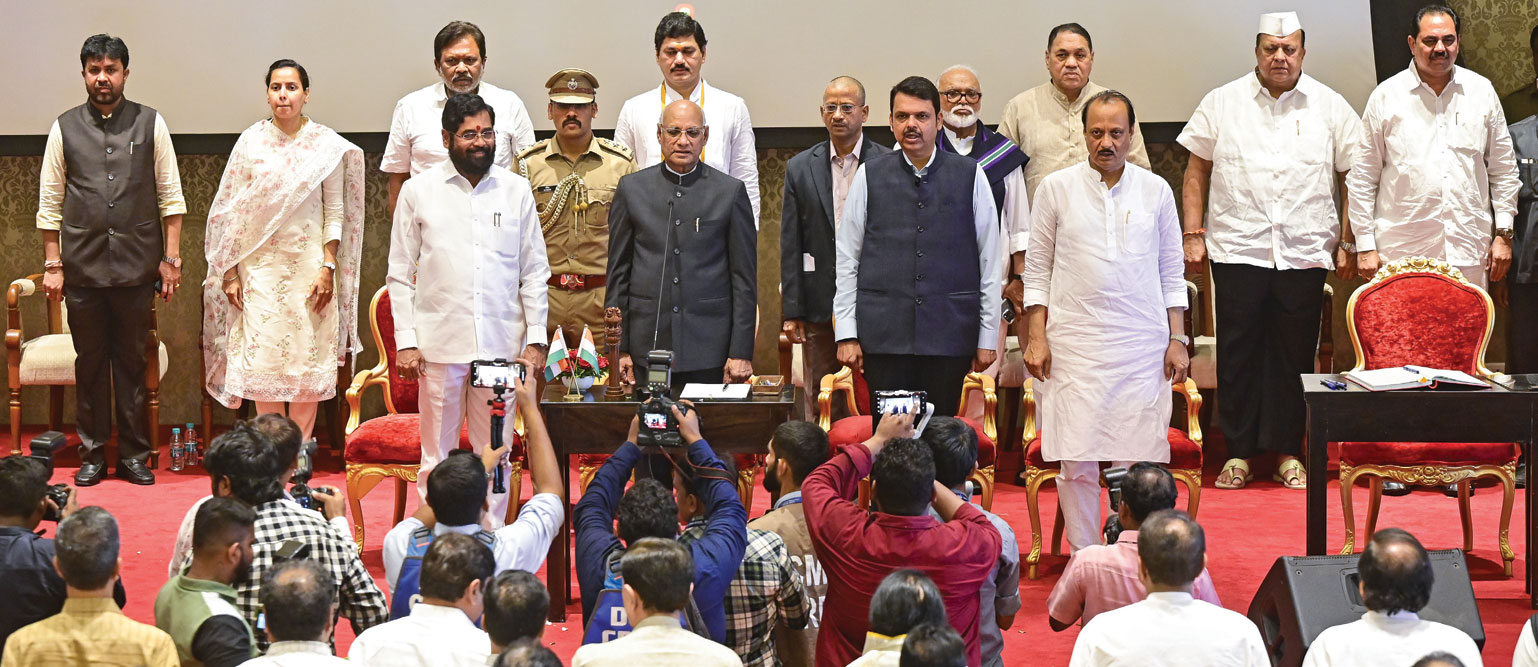
The BJP leadership’s ability to wean away the rebel NCP members, even making eight of them ministers in the state government, is a morale booster for NDA in the run-up to both the state polls and the General Election. To that end, it cannot be perceived merely as a comeback to the humiliation it suffered in 2019 in Maharashtra or even a retort against the loss in Karnataka, the only southern state BJP had in its kitty. Nor can the gains be seen only through the prism of Maharashtra. True, Ajit Pawar’s troops, including veterans like Dilip Walse Patil, Chhagan Bhujbal and Praful Patel, besides Dhananjay Munde and Anil Patil, not only bring their individual strengths to the table but Pawar Jr himself fills the desperately needed Maratha leadership gap in BJP, a constituency among whom the party has found itself very weak in the state so far, thanks largely to NCP.
Referring to the situation he faced in 1980 when he was left with only six MLAs, Sharad Pawar pointed out that he bounced right back. But that was 43 summers ago. And he was in his late thirties
AT THE VERY LEAST, BJP in Maharashtra is politically enriched by the eight ministers from the rebel NCP who took oath as ministers, and fully armed for the state elections in October 2024 scheduled after the Lok Sabha polls.
At the most, the party is closest to hitting the gold vein in 2024, for both the Lok Sabha and Assembly polls. Of the 48 Lok Sabha seats in the state, BJP won 41 in alliance with the Shiv Sena and the Republican Party of India (RPI) in 2019. Of its own, BJP won 23 and 18 seats in Maharashtra and West Bengal, respectively. While BJP won 23 seats in the key western state, the undivided Shiv Sena had notched up 18. Of the undivided Shiv Sena’s 18 MPs, 13 later joined Eknath Shinde’s faction which formed the state government with BJP, currently in power in Mumbai.
Maharashtra, West Bengal and Bihar account for 48, 42 and 40 Lok Sabha seats, respectively. To make up for perceived weaknesses in the first despite Shinde and his men on its side, NDA is aiming to top the 41 seats of 2019 by at least another four, strengthened by Ajit Pawar and his troops. Shinde knows as well as BJP that it is likely to be difficult without Pawar Jr, with possibilities still open that Uddhav Thackeray could dent the alliance’s tally, especially with less than a year for the General Election and just over a year for the Assembly polls. There is also the sword of disqualification of Shinde’s 16 MLAs by the Supreme Court hanging over the government. With this major blow to NCP, BJP can seriously hope to cross a big hurdle in Maharashtra with a stable government in place till the 2024 elections.
With NCP out of the equation in the emerging anti-Modi opposition—Sharad Pawar was gearing up to play a key role in the unity effort for that alliance—BJP has paved the way for a smooth run for NDA at the hustings.
The recent developments are a relief for BJP which has now gained time to focus on Bihar first and then West Bengal after the Lok Sabha polls. Bihar Deputy Chief Minister Tejashwi Yadav, his father, veteran politician Lalu Prasad, and his mother (and former chief minister) Rabri Devi have all been formally charged in the railway jobs for land scam, even as Chief Minister Nitish Kumar struggles to keep his men with him in the run-up to the elections. The developments in Maharashtra and Bihar have now likely ensured that NDA and BJP are on a sure footing for 2024, keeping their earlier tally, or perhaps even topping it up.
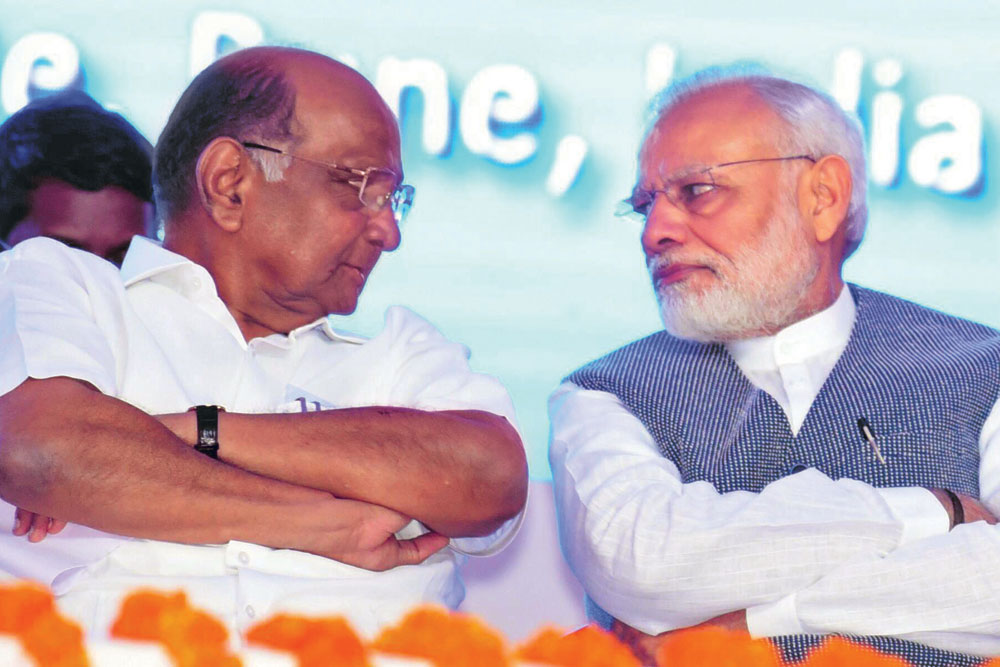
Striking political deals came naturally to Pawar Sr, in a career spanning several decades—he was chief minister of Maharashtra four times and a Union minister thrice—during which his acolytes and beneficiaries spun a myth about him that comprised a string of adjectives, from astute politician to clever strategist to deal-maker extraordinaire, etc. One writer noted candidly: “He flips loyalties and calls it politics. The ethics of [his] politics remains anyone’s guess.” On this long road to earning the formidable superlatives, Sharad Pawar is reputed to have made friends out of enemies and broken up with more than one friend more than once, bargained hard, negotiated harder, and struck many tough deals.
It was not any different on the morning of November 20, 2019 when Sharad Pawar sought a meeting with Prime Minister Narendra Modi. Parliament was in session. Pawar reached the prime minister’s room on the ground floor of Sansad Bhavan a little after 12 noon. Before entering Parliament, Pawar told waiting reporters that the meeting was in order to seek urgent intervention by the Centre in the wake of “crop damage and rising agrarian crisis in the state”. It was a time when there was uncertainty in Maharashtra over government formation and talks were on between NCP, Congress and the Shiv Sena for an alliance.
Pawar had a wishlist in November 2019—Fadnavis should not be chief minister. His daughter should be made union agriculture minister. Both these conditions were unacceptable to Prime Minister Narendra Modi
After handing over a three-page memorandum on the distress of growers of soybean, paddy, finger millet, corn, bajra and onion, he got down to his actual business—negotiating terms for the formation of a BJP-NCP government in the state.
Pawar had a wishlist—Fadnavis should not be chief minister and BJP was free to choose another leader. The second was that his daughter Supriya Sule should be made Union agriculture minister. Both these conditions were unacceptable to the prime minister. Modi, sources in NCP close to Pawar told Open, was not averse to Pawar joining the government with the big portfolio, but not his daughter. He also told Pawar that there could be no compromise over Fadnavis who was already projected as the chief ministerial candidate. But Modi was open to a wider discussion on the alliance and soon, Home Minister Amit Shah joined the meeting. When Pawar repeated his conditions, the response was the same as that of the prime minister. But they agreed to get back to Pawar by the end of the day. In the evening, Anurag Thakur, then minister of state (MoS) in the finance ministry, was told to convey to Pawar that both his demands were rejected by BJP.
Sharad Pawar, who revised his autobiography Lok Maze Sangati to add the events of post-polls 2019, admitted that there were informal talks between him and BJP leaders about an alliance. Not unexpectedly, he chose to deliberately underplay the meeting and obfuscate details with “I told Mr Modi that there could be no political truck between us.”
Pawar’s road to the top of the political pyramid wasn’t entirely smooth, unlike his clout with sugar cooperatives from Baramati to Marathwada. A lot of his reputation on the way is littered with apocryphal stories, a mythical political prowess, and the stuff of legend. In all the decades of his political life, he was many times within close reach of the top job, but never able to grasp it. Pawar’s name would crop up each time the issue of national president, party president, prime minister, or any top executive or constitutional position, was debated. Yet he never seemed to make the final cut until he became president of his own party. In 1967, he joined Congress, left it in 1978, and then rejoined and left again in 1998. In 1999, he founded NCP after nursing a grouse for having been pipped to the prime ministerial post in 1991 by PV Narasimha Rao despite leading the strongest contingent of MPs from Maharashtra. In 1997, he was checkmated for the post of Congress president by Sitaram Kesri and, in 1998, again for the same post, by Sonia Gandhi. That he did not endear himself much to the top party leaders was well known, especially after he publicly asserted that the posts of Congress president and prime minister should remain distinct.
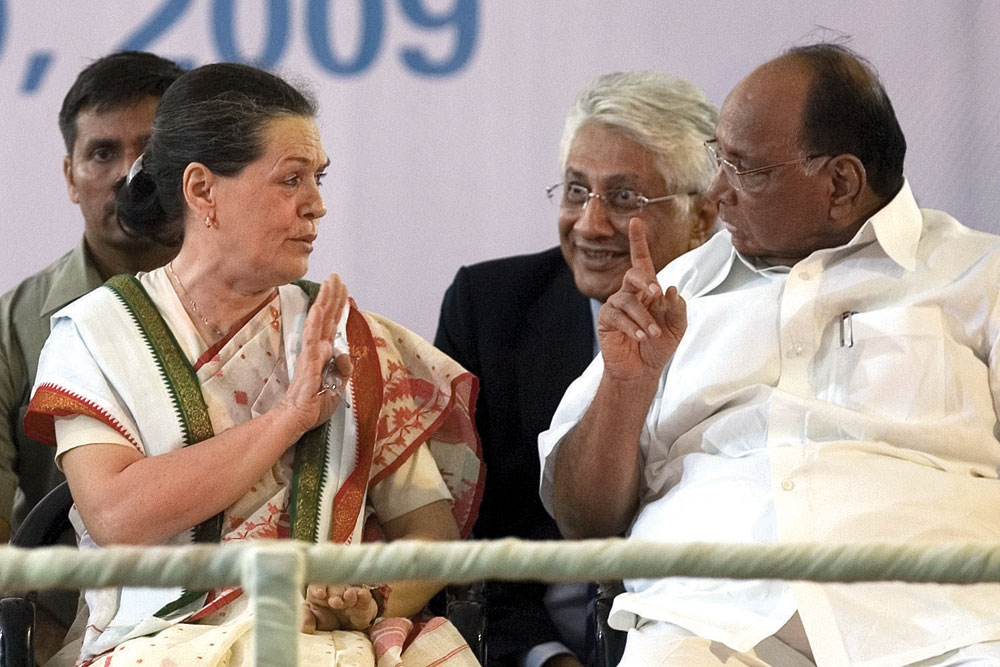
Undeterred, he never let circumstances drag him down but embarked on new strategies to inveigle himself into a place closest to the balance of power, time and again. With only nine out of 32 contested seats in 2004, for instance, he managed to leverage his perceived towering strength, often bigger than the reality, and grab key Cabinet posts for NCP in the first Manmohan Singh government, to which the Left had lent unconditional support to keep out BJP. Of the portfolios, both agriculture and food were held by Pawar himself and considered crucial to furthering the interests of his supporters and votaries. He was forced to let go of the food and consumer affairs ministry in the second United Progressive Alliance (UPA) government after a series of goof-ups and alleged scams surrounding food imports and high commodity prices at home. NCP managed to retain its nine seats in 2009 but out of a bigger number of seats (68) contested. Since then, the tally has steadily fallen, with only six seats won (four in Maharashtra) out of 36 contested in 2014 and only five out of 36 (four in Maharashtra) in 2019. Despite the innumerable misses, the NCP chief continued to be considered a strongman, an indefatigable defender of his own image, a Chanakya of rajneeti. As, no doubt, he continues to perceive himself—a Houdini who could work his way out of complex and contradictory situations with ease and astuteness.
Sinking the Vasantdada Patil government in 1978 by luring away Govindrao Adik and Sushilkumar Shinde was not the only event seen as a treacherous high point in Pawar’s career. In 1978, Congress split into Congress-U and Congress-I. Pawar joined Congress-U, following his mentor Yashwantrao Chavan, and entered the Vasantdada Patil government, formed to keep out the Janata Party, the single-largest at the time, as industry and labour minister. But in July 1978, Pawar broke away from Congress-U to form a coalition government with the Janata Party. At 38, he became the youngest chief minister of Maharashtra. His Progressive Democratic Front (PDF) government was dismissed in February 1980, following Indira Gandhi’s return to power.
Reviewing Pawar’s autobiography On My Terms: From the Grassroots to the Corridors of Power, Suraj Yengde wrote scathingly about the much-vaunted Pawar neeti: “There is no political wisdom in the gauntlet of this juggernaut’s life. Pawar is unwilling to share the tardy nature of his political ascendency or the untimely decisions he made at the cost of Maharashtra politics…” Pawar rejoined Congress in 1987, apparently to strengthen the Congress culture in the state. It was seen by many as a key reason for the growth of the Shiv Sena. In fact, even as the Dalit Panther movement became powerful in the Marathwada region to redress the appalling conditions of Dalit communities, Pawar was perceived as stymieing them by fuelling the growth of the non-Dalit communities by ‘surrogating’ the Shiv Sena. He became chief minister of Maharashtra again in March 1990 after Shankarrao Chavan was inducted as finance minister in Rajiv Gandhi’s Union government. The 1990s were a mixed bag for Pawar who, with the largest contingent of Maharashtra MPs behind him, unsuccessfully laid claim to the post of prime minister after Rajiv’s assassination, but the Congress Parliamentary Party (CPP) unanimously elected Narasimha Rao as prime minister. Pawar served as defence minister in the government until Rao despatched him back to his home state as chief minister in 1993 after Sudhakarrao Naik stepped down, having failed to handle the Bombay riots.
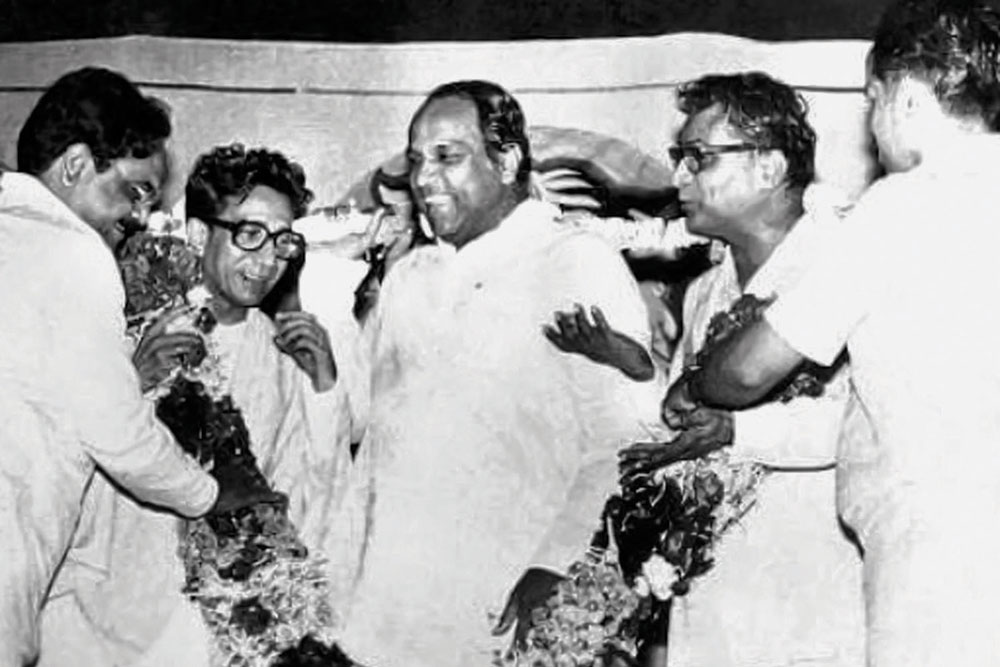
On March 12, 1993, Mumbai (then still Bombay) was rocked by 12 explosions in different parts of the city. This series of blasts left 250 dead and nearly 700 injured. According to some news reports, the death toll was over 300 and the number of injured stood at 1,400. A day before the blasts, Chief Minister Sharad Pawar had addressed a meeting of police inspectors and senior officers. But soon after that the blasts happened, and Pawar later admitted in 2006 that he had misled people on the number of blasts by including a Muslim-dominated locality in order to “keep the peace”. This sort of opportunistic politics over the lives of ordinary citizens killed in a gruesome terrorist attack did not go down well with the public and exposed Pawar’s suspect ethics.
His stint as chief minister in 1993 witnessed the worst public calling out of his “Pawar neeti”, leading ultimately to the ouster of his government. Govind Ragho Khairnar, better known as GR Khairnar, was deputy commissioner in the Brihanmumbai Municipal Corporation (BMC) and known to be upright and fearless in facing political bullying. That year, the civil servant took on Chief Minister Pawar, accusing him of being both corrupt and unethical. Khairnar’s public meetings were well attended and at times also disrupted by Pawar’s supporters. His reputation as a middle-class hero grew rapidly but he was later brought to trial for alleged insubordination and heavy-handedness but cleared of all charges. Before he took on Pawar, Khairnar was also at loggerheads with then Chief Minister Vasantdada Patil in 1985 when, as ward officer, he demolished a hotel run by Chandrakant Patil, the chief minister’s son. Ironically, Pawar was instrumental in bringing down Patil’s earlier 1978 government. In 1995, BJP and Shiv Sena backed Khairnar in the run-up to the elections and quashed Congress by supporting the cause of this middle-class hero. It was only in 1997 that Khairnar won his case against BMC and, in 2000, he was finally reinstated as deputy commissioner. But his crusade against corruption stripped the veneer of the ‘ethical politics’ Pawar was supposedly practising.
Pawar founded NCP in 1999. Today, NCP is 24 years old and its best performance was almost two decades ago. In the 2004 Assembly polls, it won 71 seats and nine out of 48 Lok Sabha seats. That was the party’s heyday. Since then, Pawar has been looking at his political prowess in the rearview mirror and relying on negotiations, deal-making and compromises, including those of the moral kind, to shore up his reputation as the wizard of vote-bank politics. His best-case scenarios have, for a while now, rested on dreams of holding the balance of power in emerging political situations. In comparison, Mamata Banerjee, who floated her Trinamool Congress a year earlier in 1998, is now third-time chief minister of West Bengal with 215 seats. Compared to NCP’s snail-like progress under Pawar in Maharashtra, even the likes of YS Jagan Mohan Reddy of the YSR Congress Party (YSRCP) and K Chandrashekar Rao of the now rechristened Bharat Rashtra Samithi (BRS), in business for only about 10-15 years, command more clout in all corners of their respective states.
With Supriya Sule and others no match for the likes of the energetic and untiringly ambitious Jagan Mohan Reddy, the Maratha strongman’s claim that he was readying to retire from politics should have been easily accepted. But there are a significant number of sceptics. Most trust that Pawar, the weathered political warhorse, will lead his now bloodied party back to health again instead of laying down arms.
By successfully taking Pawar, the man perceived as the one with the most political heft, out of the equation in an already struggling anti-Modi alliance, both in Maharashtra and for the 2024 General Election, a high rate of demoralisation has been triggered within the opposition. Mamata Banerjee has already announced that she will brook no alliances in her state and demanded that parties like Congress make way for strong anti- BJP parties in their home bases to give them the upper-hand. Akhilesh Yadav is reluctant to part with anything but a handful of seats in Uttar Pradesh. The Left and Congress are direct rivals in Kerala where a hard battle for supremacy is on.
Political pundits backing the anti-Modi efforts have dismissed the developments in Maharashtra as overhyped since NCP was never a big party. Essentially, what happened in Mumbai would likely stay in Mumbai and pan-India unity efforts of the anti-BJP alliance would not suffer a body blow. Meanwhile, Pawar is putting up a brave front and holding out. At his press conference, he underplayed the recent developments. Referring to the situation he faced in 1980 when he was left with only six MLAs including himself, he pointed out that he bounced right back. But that was 43 summers ago. And Pawar was in his late thirties.
Abhishek Mukherjee describes Sadu Shinde as the man who could never make it big at the top level but made his way indelibly into the annals of Indian cricket in a completely different way. That could be an apt description of Pawar himself, with some observers confessing admiration, if grudgingly, for his untiring skills at political entrepreneurship and manoeuvring. It remains to be seen if Sadu Shinde’s son-in-law will rise again, as he did all those summers ago, and deliver that googly to knock out his opponents. As of now, it seems unlikely.

/wp-content/uploads/2025/07/Cover-Shubman-Gill-1.jpg)









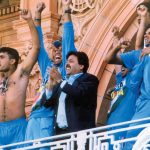



More Columns
‘Fuel to Air India plane was cut off before crash’ Open
Shubhanshu Shukla Return Date Set For July 14 Open
Rhythm Streets Aditya Mani Jha